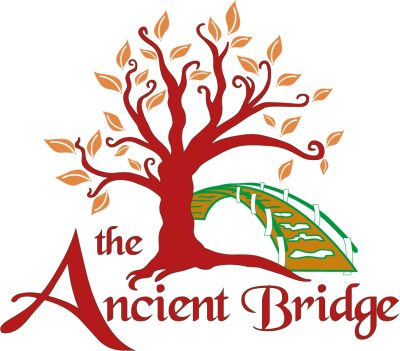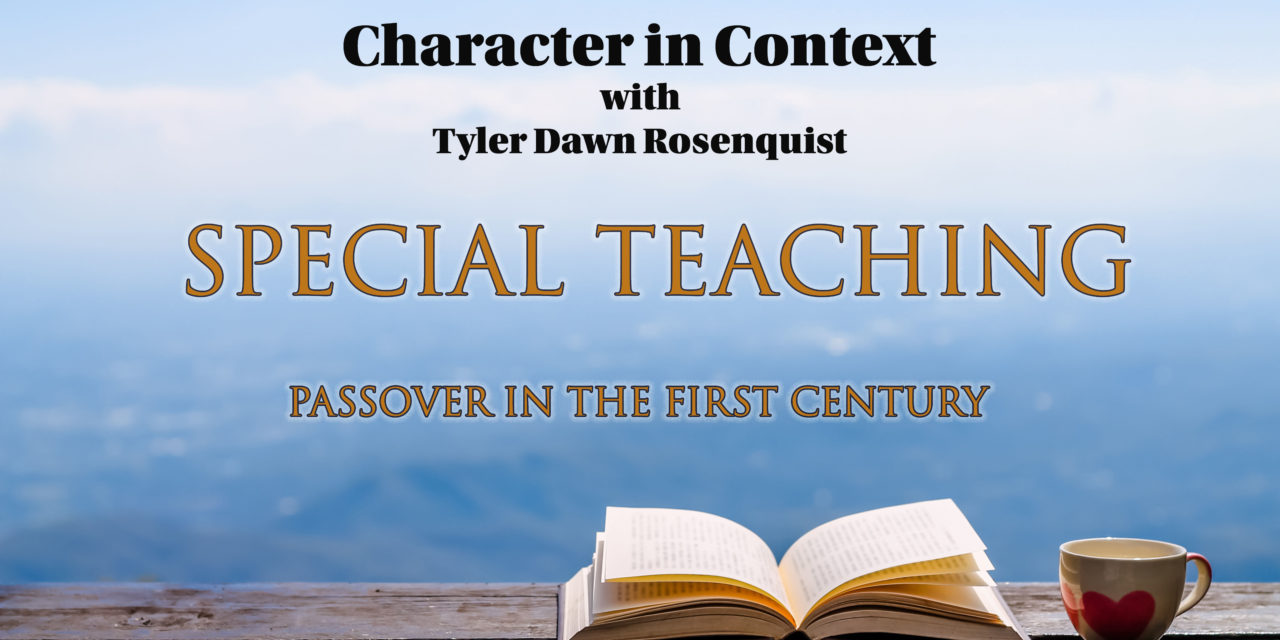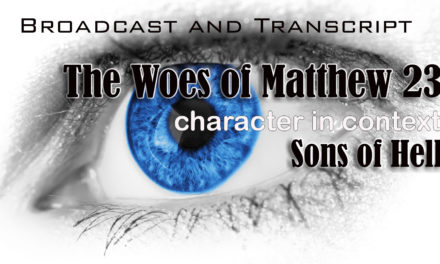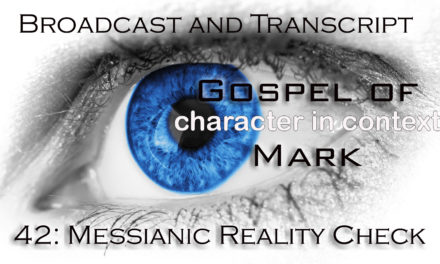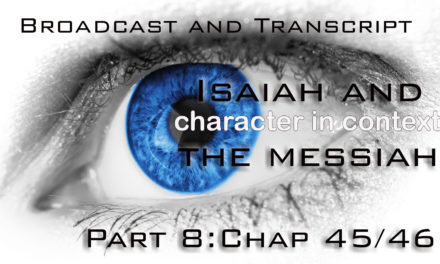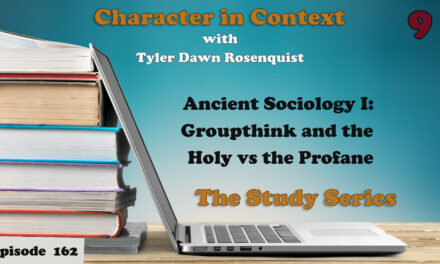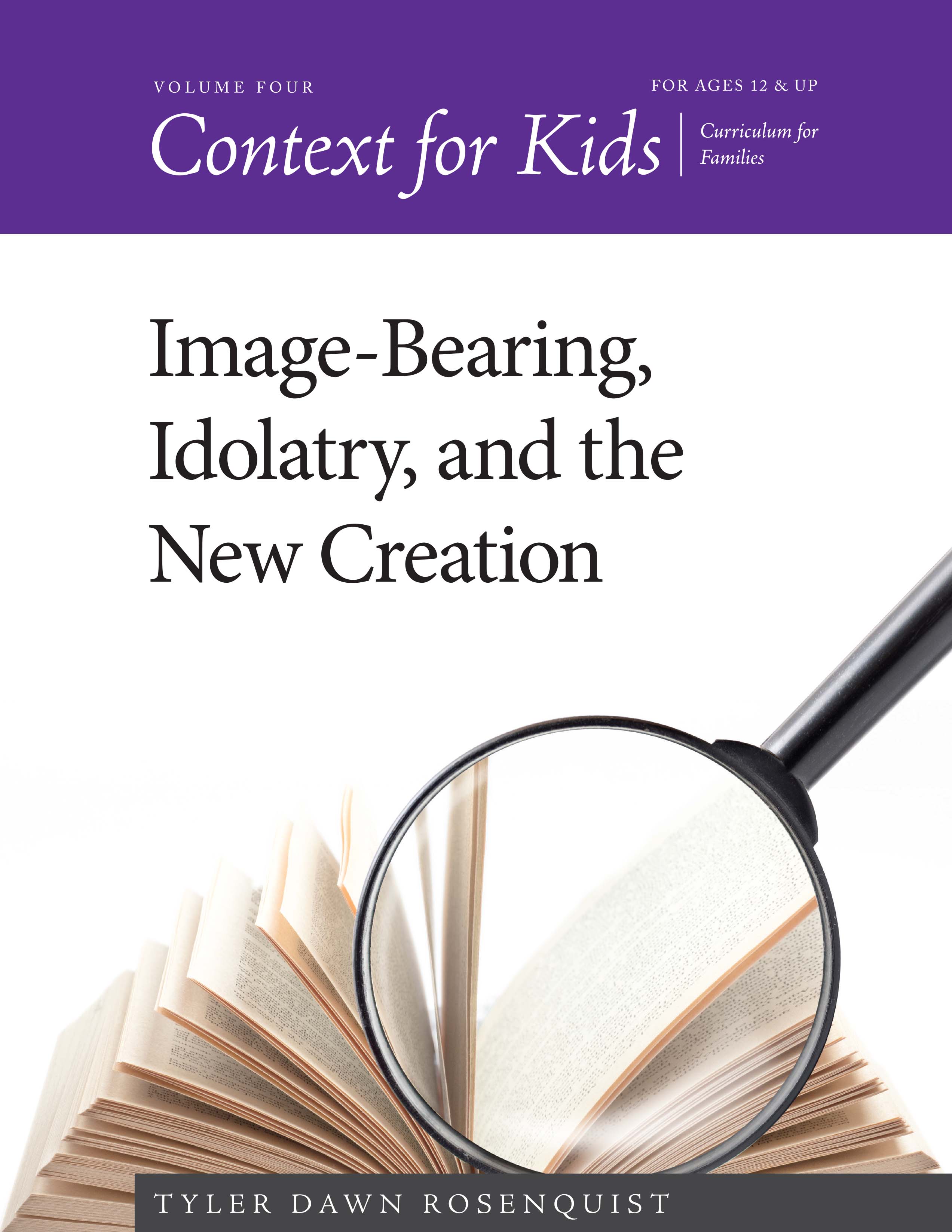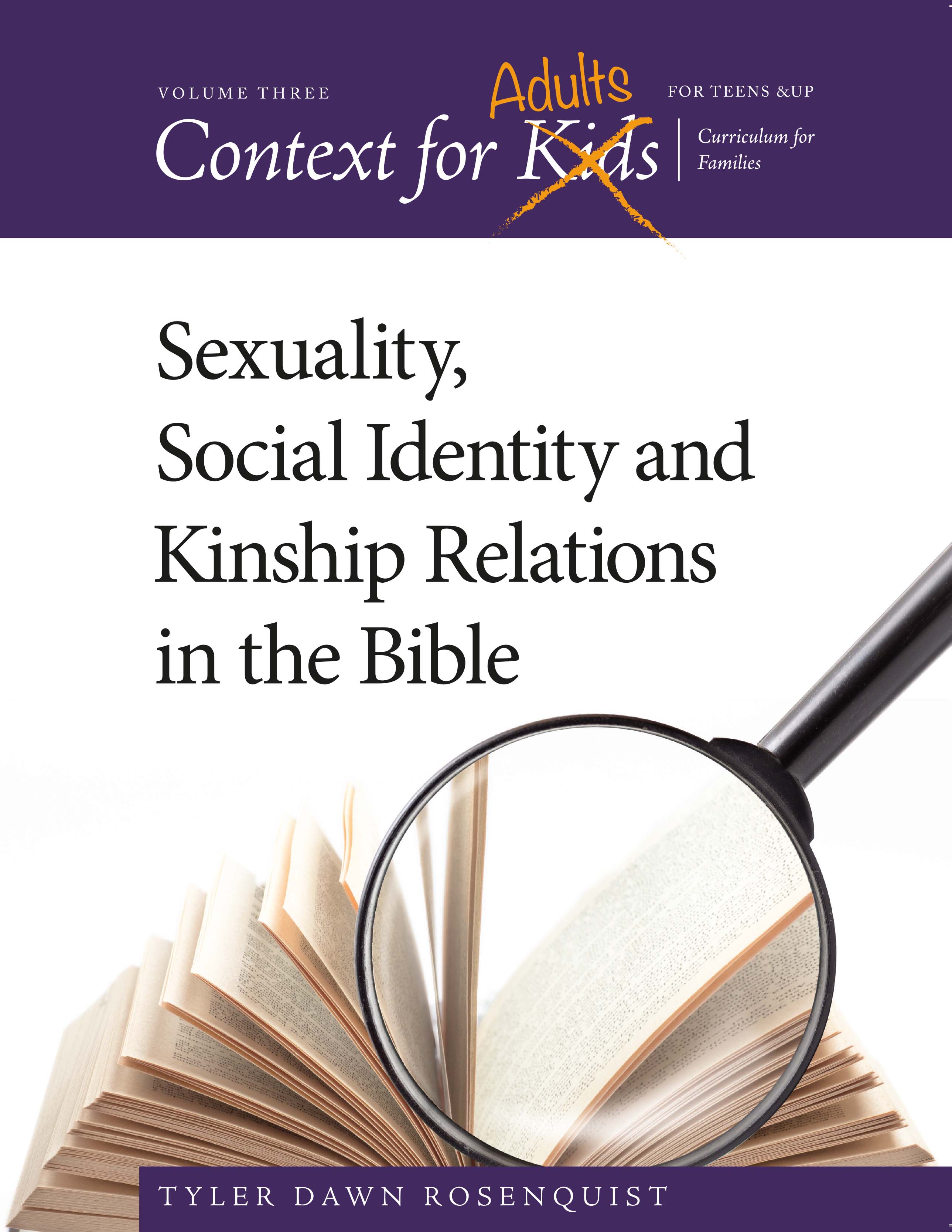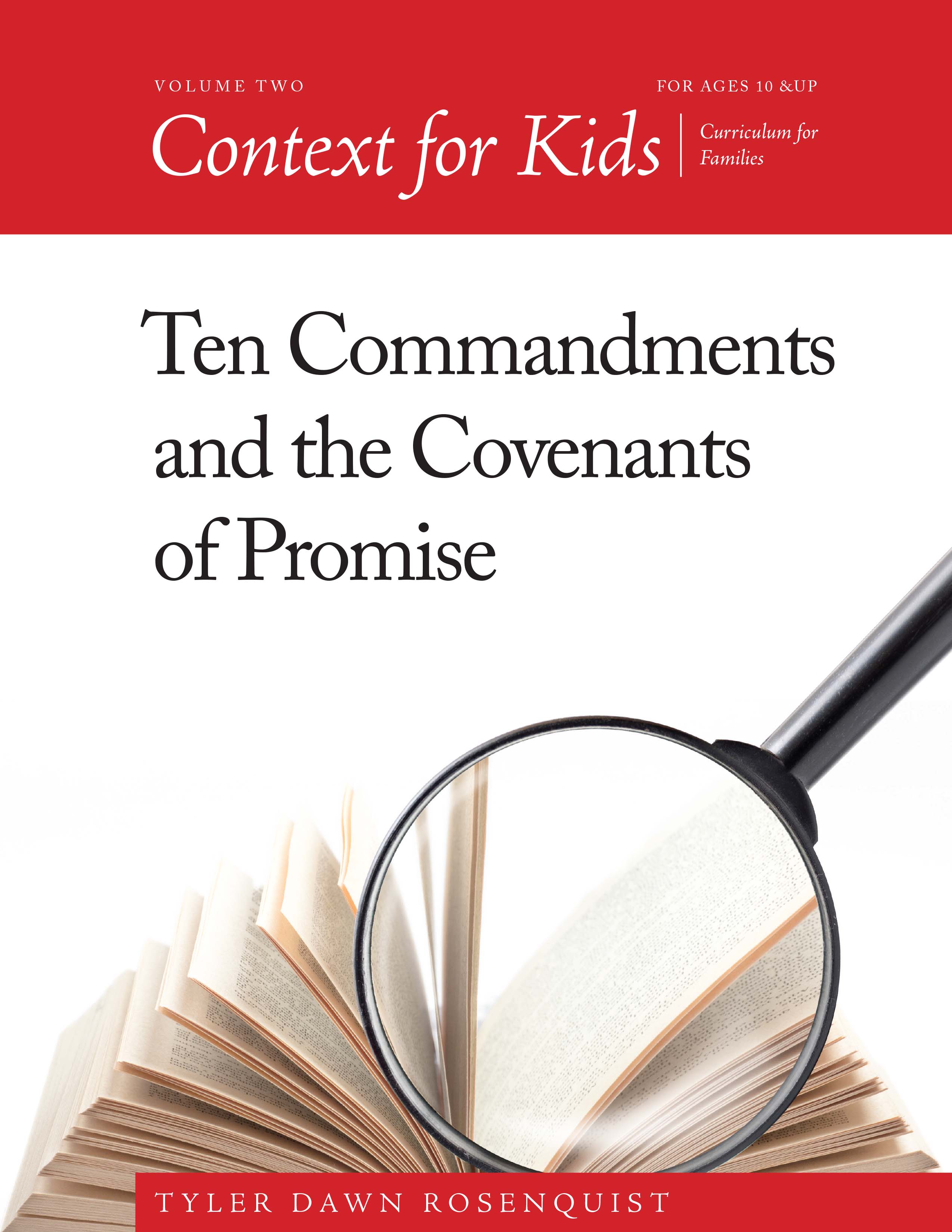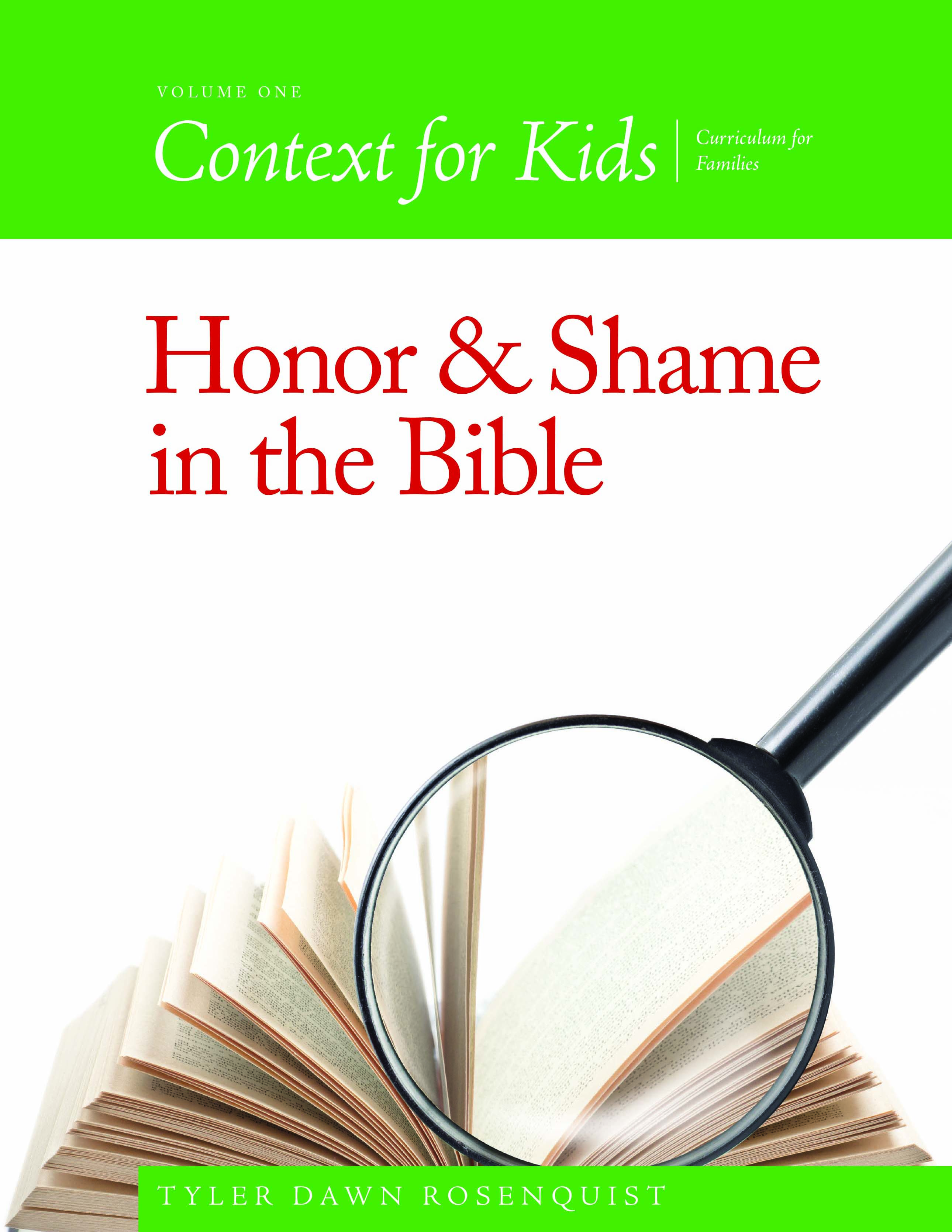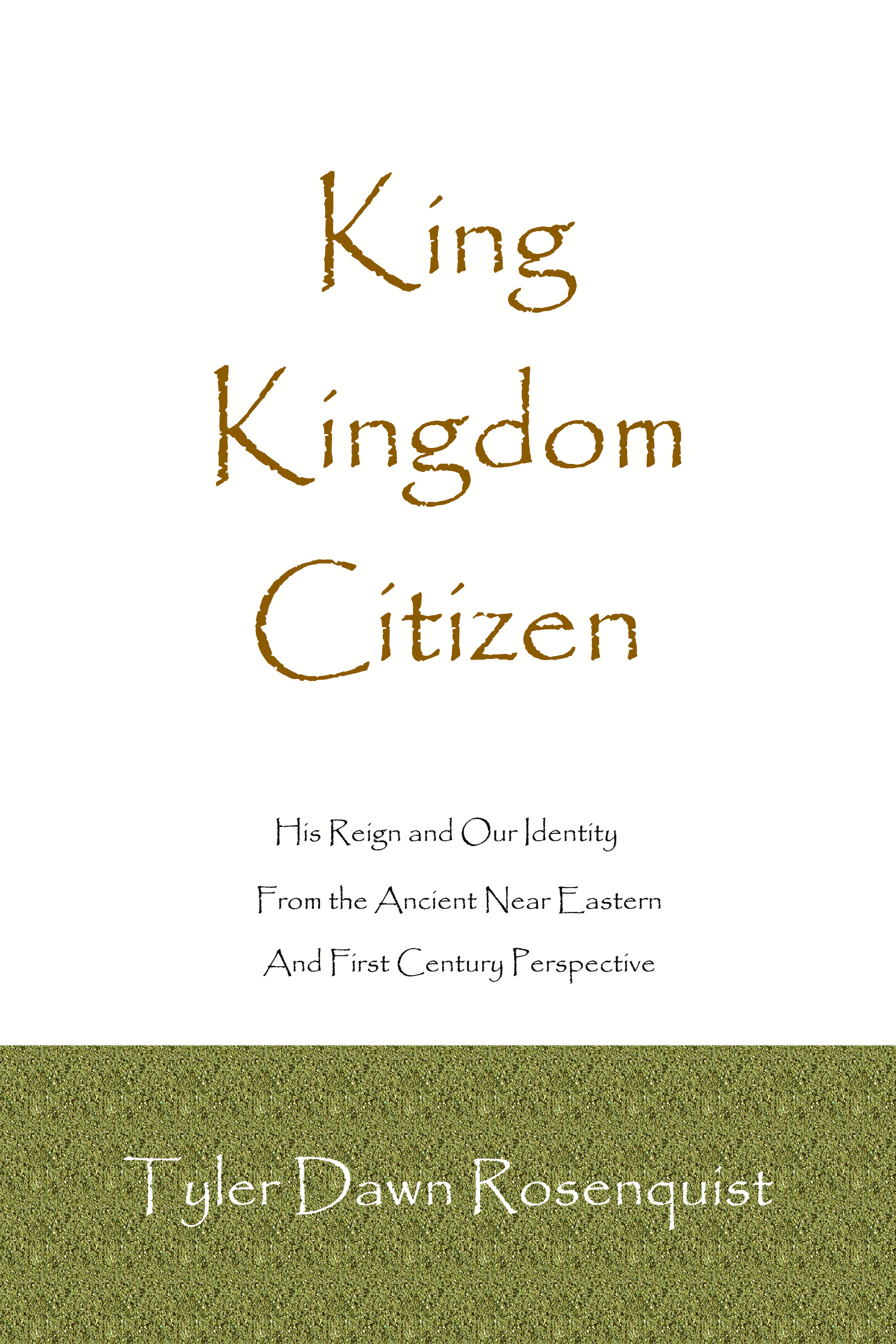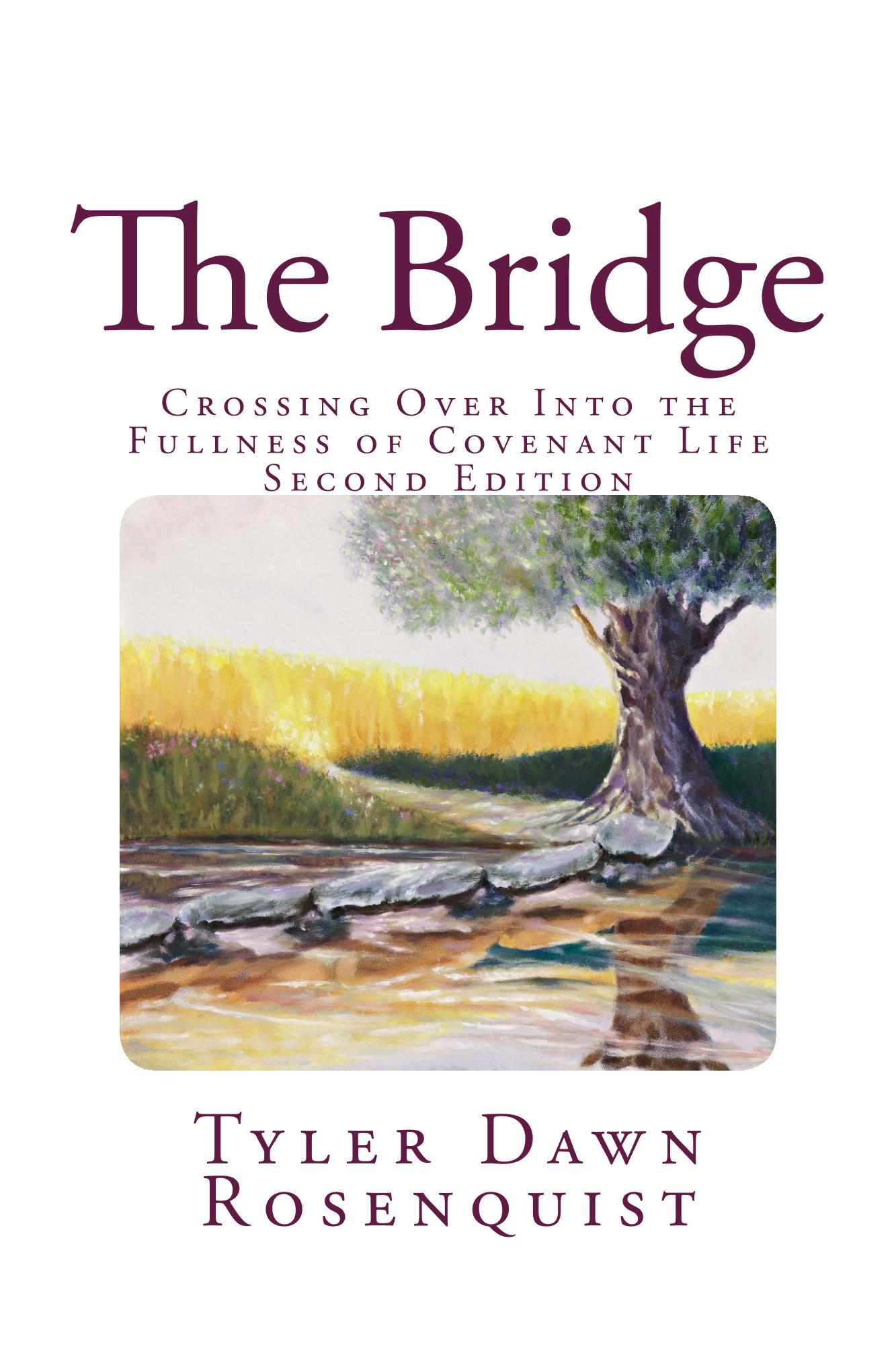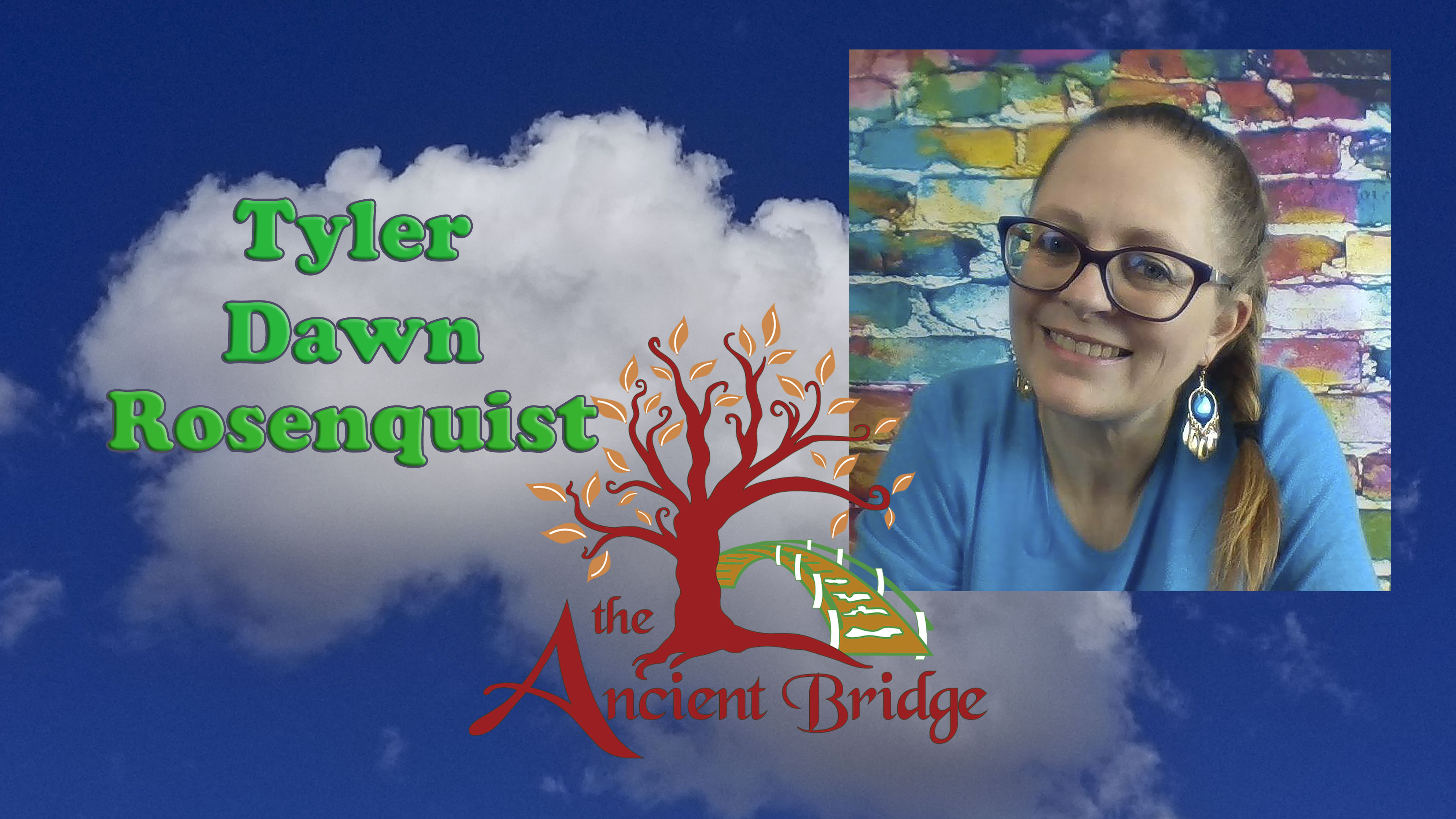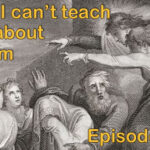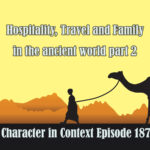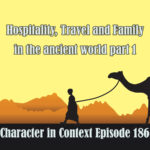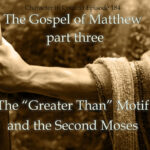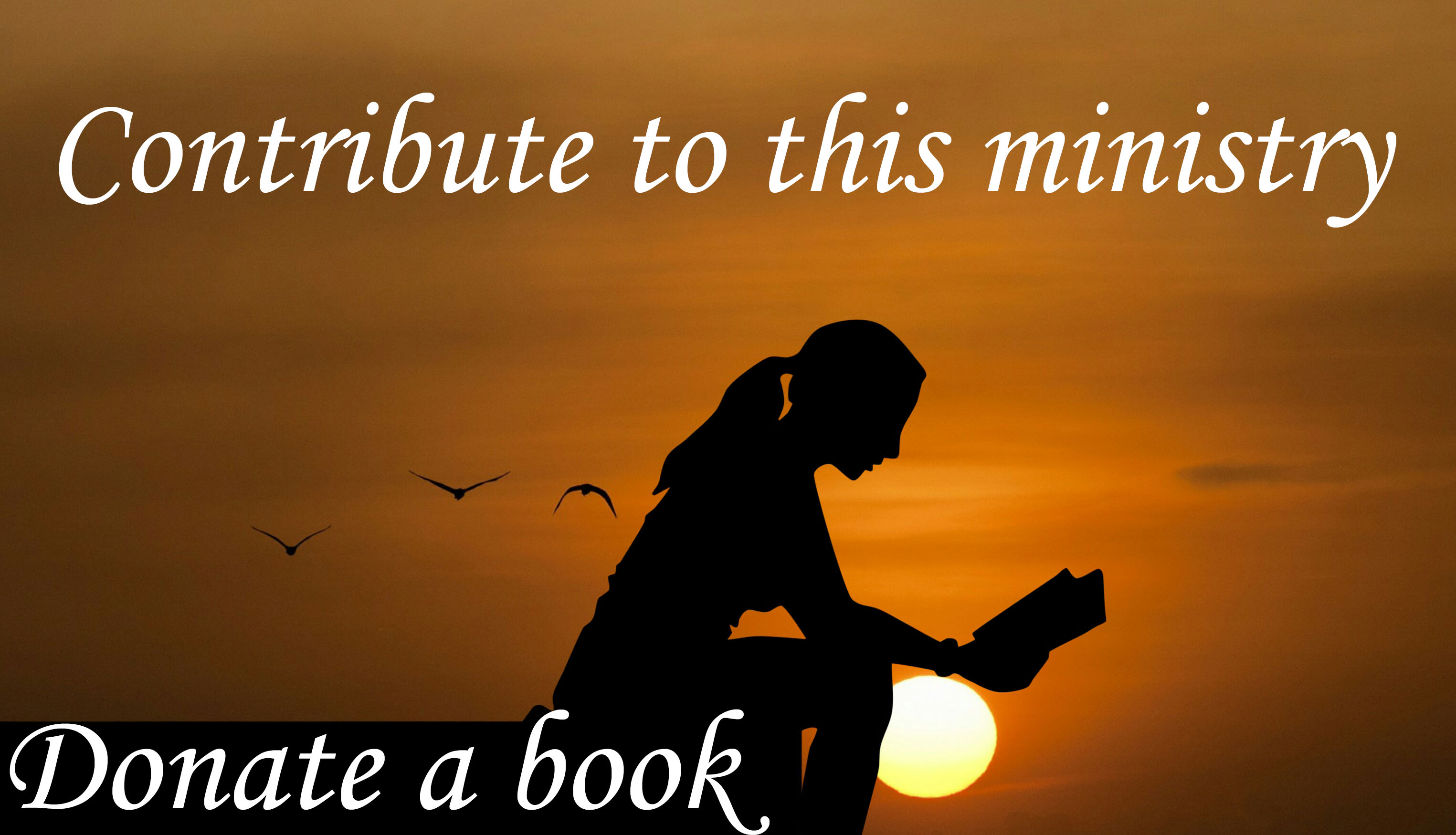Before we get into the actual breaking of the bread and drinking of the wine, we need to talk about the Passover in the first century and what we can know (and can’t know) about it through contemporary writings. Not contemporary to us but contemporary to Yeshua/Jesus and His followers.
If you can’t see the podcast player, click here.
The Passover—the festival celebrating the greatest deliverance the Jewish people had ever experienced. It is referenced throughout both the Hebrew and Greek Scriptures. It was the definitive experience of Israel—eclipsing everything that came before or after. Until the Passover was finally fulfilled in Yeshua/Jesus as the Greater Exodus was inaugurated at the Cross and witnessed by the resurrection. It is so important to understand this before we dive any deeper into Mark 14 and 15 because all of the Gospel authors define Yeshua’s ministry as being the redefining of what Passover means—most notably in the Gospel of John. As Paul said, making the former Passover End exodus look like a shadow in comparison. I will probably re-air this broadcast when we get to this material again in other Gospels or maybe I will have new material and have to do a new broadcast.
Hi, I am Tyler Dawn Rosenquist and welcome to Character in Context, where I teach the historical and ancient sociological context of Scripture with an eye to developing the character of the Messiah. If you prefer written material, I have six years’ worth of blog at theancientbridge.com as well as my six books available on amazon—including a four-volume curriculum series dedicated to teaching Scriptural context in a way that even kids can understand it, called Context for Kids—and I have two video channels on YouTube with free Bible teachings for both adults and kids. You can find the link for those on my website. Past broadcasts of this program can be found at characterincontext.podbean.com and transcripts can be had for most broadcasts at theancientbridge.com. If you have kids, I also have a weekly broadcast where I teach them Bible context in a way that shows them why they can trust God and how He wants to have a relationship with them through the Messiah.
All Scripture this week comes courtesy of the ESV, the English Standard Version but you can follow along with whatever Bible you want. A list of my resources can be found attached to the transcript for Part two of this series at theancientbridge.com.
So, let’s begin with the original Passover, so we can contrast it with the later memorial meals, and the fulfillment. I do this because there is this unfortunate misunderstanding that we are to still sacrifice a lamb and paint our doorposts and all of that but Yahweh instituted the festival as a memorial, not a complete reenactment. That is very important to understand because there is a difference between what the Israelites were commanded to do before the Covenant, when they were still enslaved and had not yet been delivered, and what they were commanded to do in recognition of the Covenant as a people free to serve and worship Yahweh and Yahweh alone. It’s an entirely different situation and an entirely different mindset and reality and there are entirely different laws pertaining to each.
Exodus 12 famously recounts the commandments concerning the first Passover, as well as the commandment to memorialize it in all future generations and in addition, to eat only unleavened bread for seven days—but we will talk about that later. For the first Passover, God commanded Israel to select a sheep or goat and the Hebrew translates literally to “son of a year” (so, between eight days and one year of age in the reckoning of the non-Western world) on the tenth day of the first month (remember that Israel had four time markers—months for festivals and years for civil matters like the agricultural shemitah cycles, and Jubilees, freeing of debt-slaves beginning in the fall, years for the determination of tree ages in the winter, and years for determining the tithe on herds and flocks in the summer). Anyway, so tenth day, they were to choose a flawless male sheep or goat from their flocks. Now, I have heard it said many times that they were commanded to bring it actually inside their house and treat it like a family member and feed it by hand but I actually have no idea where that idea comes from. Like the whole idea of Levitical shepherds swaddling lambs and putting them in a stone manger, I suspect that it is a modern myth designed to just give everyone the warm feelies. I mean, anyone who has been involved with lambing knows that you can’t swaddle lambs, nor would you want to. But the whole story goes that they treated the lamb like a child so that it would bother them to slaughter it. I have seen in Rabbinic commentaries the idea of bringing it in the home for the purposes of inspection, or for the breaking with the idolatrous practice of sheep worship among the Egyptians but not for the purposes of coming to care for it.
Ewes went into heat in the late fall and lambed in the early spring. Some would go into heat in the spring and lamb in the fall but this isn’t optimal as survival of the lambs through the winter would be far more difficult. They gestate (are pregnant) for roughly 147 days, so, a little less than five months through the winter. Older ewes are generally pregnant for longer than younger ewes. So, based on a variety of factors, you can have lambs born over the course of a month or longer, leading to some “one year olds” being too old for the Passover and some being too young. Because of this, you might have a really large lamb, being too large for one family to eat in one night, or a very small lamb. Hence, for the first Passover, you could combine families and it was legislated much later than you would need one lamb for every ten people in order to make sure that everyone got at least a piece of meat the size of an olive. That would be a teeny lamb for sure. But it was very important that it be within it’s first year because then it wouldn’t have been profitable for anything—it will not have been sheared yet for wool. So, it couldn’t be a “used” lamb.
Then on the late afternoon of the 14th day of the month, the lamb or kid would be slaughtered. It’s a sacrifice, a korban, okay? That means that two things are important—more important than anything else. One, the handling of the blood—if the blood isn’t handled properly then it does not qualify as a sacrifice, period. Two, what happens with the flesh, fat and entrails. But, as I said before, if the blood wasn’t handled properly then the flesh is not holy. In this case, the blood was to be caught in a basin and applied to the doorposts, the sides of the doorway, and the lintel, the overhead beam, with a branch of hyssop. Specifically, this was the house they would eat the meat at, regardless of whether it was their house or not and the reason will be very important. They were to roast the animal, intact, with the head and organs still intact. No boiling. And we will look at something written closer to the time of Yeshua when we talk about how things were done in the first century. It would take until after sundown to cook a lamb like this, and so they were eating the lamb at night along with bitter herbs and unleavened bread. They were to eat fully dressed for a journey, with their sandals on and staff in hand. But if they left their homes before commanded to do so, then it is implied that the blood would be of no effect and the destroyer would treat them just like any Egyptians who were not putting their faith in God and listening to Him. Anything uneaten would have to be burned in the morning because it was holy. All eaten sacrifices had specific time limits for how long people could hold on to the meat before needing to destroy the remains.
Now, it was on this first day of the month that the commandment was given and they were told what was about to happen to the Egyptians. At this time, they were also given some preliminary guidelines for how this was to be observed in the future. These instructions involved the length of the celebration, seven days, which days were high sabbaths, the first and seventh, and the eating of unleavened bread for the duration and the penalty for eating leavened bread, which is called karet—cutting off. There is much rabbinic debate as to what this meant—if people were supposed to cut the person off or if this was a divine thing. That’s really not important right now, but it is interesting.
As you undoubtedly know, in the middle of the night, the Lord struck down every firstborn in Egypt both human and animal. Moses and Aaron were called to appear before Pharaoh and ordered to leave the country along with everything they had. Yahweh also gave them further instructions: 43 And the Lord said to Moses and Aaron, “This is the statute of the Passover: no foreigner shall eat of it, 44 but every slave that is bought for money may eat of it after you have circumcised him. 45 No foreigner or hired worker may eat of it. 46 It shall be eaten in one house; you shall not take any of the flesh outside the house, and you shall not break any of its bones. 47 All the congregation of Israel shall keep it. 48 If a stranger shall sojourn with you and would keep the Passover to the Lord, let all his males be circumcised. Then he may come near and keep it; he shall be as a native of the land. But no uncircumcised person shall eat of it. 49 There shall be one law for the native and for the stranger who sojourns among you.” (Ex 12:43-49)
And after the building of the Tabernacle, these instructions were given–4 “These are the Lord’s appointed times, the sacred assemblies you are to proclaim at their appointed times. 5 The Passover to the Lord comes in the first month, at twilight on the fourteenth day of the month. 6 The Festival of Unleavened Bread to the Lord is on the fifteenth day of the same month. For seven days you must eat unleavened bread. 7 On the first day you are to hold a sacred assembly; you are not to do any daily work. 8 You are to present a food offering to the Lord for seven days. On the seventh day there will be a sacred assembly; do not do any daily work.” (Lev 23:4-8)
Instructions for the second Passover, if the first one must be missed, are in Numbers 9 and the Festival daily offerings are talked about in Numbers 28. In Deuteronomy 16, as with many other Exodus ordinances, we see a change in the law to reflect changing circumstances. The children of Israel will no longer all be camped out around the Tabernacle but will be spread out all over the Land of Israel. Because of this, a lot of the laws had to be modified to reflect their new way of living. Now, they already knew that any animal blood shed within the camp of Israel had to be applied to the bronze outer altar. If they wanted to eat an animal, they wouldn’t just slaughter it at their tents. They had to take it to the priests and they could slaughter it themselves but the priests had to catch the blood in a basin and apply it to the altar. The only exception to this rule was in the case of wild game, whose blood had to be poured out onto the ground. My husband does this when he hunts. He got a moose two years ago and an elk last year and was able to explain his reason for how he was handling the blood to the guys he was with. Impromptu Bible lesson in the wilderness.
But what happens when they are spread all over the place? Well, they no longer have to trek to the Tabernacle to eat meat, they can do it at home—they just have to return the blood to the ground. But what about Passover? Do they reenact the original Passover and do it all at home? Nope! Yahweh specifically had to cover that issue in Deuteronomy 16: “Set aside the month of Abib and observe the Passover to the Lord your God, because the Lord your God brought you out of Egypt by night in the month of Abib. 2 Sacrifice to the Lord your God a Passover animal from the herd or flock in the place where the Lord chooses to have his name dwell. 3 Do not eat leavened bread with it. For seven days you are to eat unleavened bread with it, the bread of hardship—because you left the land of Egypt in a hurry—so that you may remember for the rest of your life the day you left the land of Egypt. 4 No yeast is to be found anywhere in your territory for seven days, and none of the meat you sacrifice in the evening of the first day is to remain until morning. 5 You are not to sacrifice the Passover animal in any of the towns the Lord your God is giving you. 6 Sacrifice the Passover animal only at the place where the Lord your God chooses to have his name dwell. Do this in the evening as the sun sets at the same time of day you departed from Egypt. 7 You are to cook and eat it in the place the Lord your God chooses, and you are to return to your tents in the morning. 8 Eat unleavened bread for six days. On the seventh day there is to be a solemn assembly to the Lord your God; do not do any work. (Deut 16:1-8)
And this has been a problem in the Hebrew Roots Movement in some congregations. Years ago, my friend Rico Cortes spoke at a group that was living not too far from where I was living at the time and after he left, they got the impression that he told them they could sacrifice the Passover in their backyards. Well, Rico studies the Temple and sacrifices and he was horrified. Suffice it to say that he would never even suggest such a thing was appropriate. People can slaughter a lamb and do whatever they want with it, but they cannot call it a korban, okay? They can’t go applying the blood to their doors and call it obedience to a positive commandment because that was commanded only once and under certain circumstances. Blood has to be poured out onto the earth, okay? We can’t put it anywhere else. The Bible is very specific about what can and can’t be done and when there is no Temple, all blood must be poured out. It belongs to God and must return to God. There are positive commandments, yes, but they are modified by some very serious restrictions. The proper handling of blood is one of the most serious restrictions. Just go to Bible Gateway some time and do a word search on blood—look at how often the subject of the proper handling of blood and the penalties for not handling it properly pop up just in the Torah.
Now, the entire Passover/Exodus metanarrative is all over the Bible from beginning to end. It’s one of the, if not the main theme of the Scriptures. The idea of deliverance and moving closer to God is what the Scriptures have been about since the choosing of Abraham back in Genesis 12. The Psalms repeatedly draw reference to the Exodus, as do the prophets and most notably in Isaiah where he describes the return from Babylon in terms of a mini-exodus all the while also referring to an even greater Exodus when Yahweh Himself brings both Jews and the Nations to Himself on His holy mountain where the entire world will finally worship Him. The Gospels all paint the picture of Yeshua as the Passover and His work on the Cross as inaugurating the Greater Exodus into the New Creation on the eighth day in His resurrection. Mark goes to great lengths to portray Yeshua as the Yahweh-warrior of Isaiah’s New Exodus motif, rescuing the world from the clutches of sin and death as the “Arm of the Lord” which in the Septuagint was identified as one and the same with the Messiah. John identifies Yeshua as the Lamb of God twice in chapter one and then spends the entire Gospel proving it—and it is no accident that in the very last chapter of John, we find Yeshua with His threefold command to Peter to care for His sheep and equating that with loving Him. Revelation calls Yeshua the Lamb twenty-eight times and even has him depicted as one, while referring to Him as the Lion (of Judah) only once and never depicting Him as a lion. Yeshua conquers as a Lamb and not as the lion that ancient kings liked to associate themselves with. Revelation even has this little blurb that would have read as very comical in 6:16 where it has the kings of the earth hiding from the wrath of the Lamb, and we read over it so much with so much baggage that we fail to see the ironic level of humor. Kings hiding from a lamb!
So, we have the whole of Scripture pointing toward and back at the Passover, and every year the children of Israel were commanded to remember and keep it so that they would not forget the mighty hand and outstretched arm of the Lord who had delivered them out of the slavery of Egypt and into the Promised Land flowing with milk and honey. And that is important not to forget that—it is of limited use to be delivered out of slavery if it is into abject poverty and homelessness. You know, like we did with the enslaved here in America. Like, now what? When Yahweh delivers in righteousness, He takes us from death into life. That is what He did with Noah. That’s what He did with the children of Israel. Exodus isn’t just about delivery from bad but delivery into something good. Noah was delivered into a cleansed earth. Israel was delivered into the Promised Land—but not all right away. They were delivered into the wilderness where they were faithless and disobedient for a generation and then their children received the promise. And at the Cross, the same thing happened as His believers were delivered into the ”now but not yet” reality of Kingdom life. We are not where we will be but thank God, we are not where we were either. And that is the reality of Passover and Exodus.
Now, by the time the first century had rolled around, the Jews were WAY more interested in keeping the Passover than their ancestors had been. It’s like, “okay, send me into exile for not being obedient—we don’t want that to happen again,” and due to both Persian and Hellenistic influences, they began to approach the Torah in very different ways and we see factions spring up within Judaism for the first time in a manner not unlike the Hellenistic philosophical schools. And with all of the bitter and violent rivalries that came along with it! Josephus, a priest born within a decade of the Resurrection who wrote about the events of the time including the ministries of John the Baptist and Yeshua, talked about the four philosophies within Judaism of his day (late first century)—three of which were alive and well in the time of Yeshua. Those three philosophies were the Essenes, the Sadducees, and the Pharisees. It is theorized that the Essenes are the Qumran sectarians, but we actually have no solid proof of it. Really, until the discovery of the Dead Sea Scrolls, it was even more of a mystery. Each of these groups handled Torah differently but the days of treating Torah like wisdom literature aimed at guiding Israel’s judges in what wise rulings looked like in the ancient Near Eastern sea of brutality were long gone and hard and fast legal codes sprung out of those guidelines. The Torah really covers very little in terms of instructions and a lot of stuff just isn’t mentioned at all. And so in true Hellenistic fashion, the Jewish scholars and leaders started to develop hard and fast traditions in order to deal with an ever more confusing world situation. And that isn’t all bad, don’t get me wrong. The Greeks and the Romans were brilliant thinkers and administrators and having a law code isn’t necessarily bad. It just became, over the centuries, overreaching and burdensome. But, these were people struggling to maintain their national identity and to wipe their slates clean with Yahweh, and to usher in the golden age when the Messiah would come and return them to the glory of the kingdoms of David and Solomon.
And so, it is believed that Passover became more of a scripted affair, which also isn’t a terrible thing because people are united through shared cultural experiences and shared worship experiences. It binds people together. And, not sure if you know this but the Passover accounts are very much of an interest to Jewish historians because they represent the earliest and most substantial descriptions of what Passover celebrations looked like during the Second Temple period. Until the Mishnah was compiled and then the later Babylonian and Jerusalem Talmuds (named for the region of the world where they were penned), the Jews weren’t nearly so meticulous about writing down what they were doing and so there is this huge gap where we know very little of what the first century audience knew. Some of what is recorded in the Mishnah and Talmud probably accurately reflects what was going on but we don’t always know what or how much. After all, it was 200 years before the Mishnah, the legal rulings of the Sanhedrin (their version of the Supreme Court) were written down and these people lived an entirely different kind of life from that of Yeshua and His contemporaries. And the Talmuds were compiled four hundred years later. So, we can make connections but we have to be very careful. What we do know is that what we see in the Gospel accounts is on many levels very much the same as what was recorded later in the Mishnah and Talmud. And so Jewish historians consider the Gospel accounts to be very valuable in their seder studies, the seder being the formal name of the Passover meal.
But we also have an account from Joseph Martyr, who was born in Shechem in Samaria as a pagan, and wrote in his second-century Dialogue with Trypho about how the Passover Lamb was prepared and cooked. And, I read an excellent article about this from a Jewish scholar named Joseph Tabory writing in The Jewish Quarterly Review, called The Crucifixion of the Paschal Lamb where he argues convincingly that Martyr’s claims are very credible and very probably based on how the Passover Lambs were presented in Jerusalem during the time of Christ. That the Samaritan presentation, which Martyr had witnessed in his youth, was based on what was traditionally done in those days at Passover. It is perhaps likely that they stopped because the Christians were using the presentation to further their case but nowhere attested to as being certain. Now, the Samaritans no longer present the Passover in this way, although Jeremias presented a picture from 1903 of a lamb with perpendicular spits and despite being able to find it attested in different sources, it is a 1932 book, in German. Not yet subject to public domain and therefore impossible for someone like me to get ahold of so I can’t put the picture in my transcript. Maybe in 2032 that will change. But right now, let’s look at what Justin Martyr had to say.
CHAPTER XL — HE RETURNS TO THE MOSAIC LAWS, AND PROVES THAT THEY WERE FIGURES OF THE THINGS WHICH PERTAIN TO CHRIST. “The mystery, then, of the lamb which God enjoined to be sacrificed as the passover, was a type of Christ; with whose blood, in proportion to their faith in Him, they anoint their houses, i.e., themselves, who believe on Him. For that the creation which God created–to wit, Adam–was a house for the spirit which proceeded from God, you all can understand. And that this injunction was temporary, I prove thus. God does not permit the lamb of the passover to be sacrificed in any other place than where His name was named; knowing that the days will come, after the suffering of Christ, when even the place in Jerusalem shall be given over to your enemies, and all the offerings, in short, shall cease; and that lamb which was commanded to be wholly roasted was a symbol of the suffering of the cross which Christ would undergo. For the lamb, which is roasted, is roasted and dressed up in the form of the cross. For one spit is transfixed right through from the lower parts up to the head, and one across the back, to which are attached the legs of the lamb.
Now, Martyr (which means witness in Greek) wrote down this dialogue sometime around the bar Kochba Revolt, so in the 130s CE. So, this is just about the halfway point between Yeshua and the Mishnah, but, Justin was actually giving a first hand account as the sacrifices were ongoing in Samaria and had long since ceased in Jerusalem because the Temple had been destroyed thirty years prior to his birth. But the Samaritans had their holy site on Mt Gerazim so it was business as usual, although their own Temple had been destroyed by the Hasmoneans in 110 BCE. In fact, they are still doing the Passover sacrifices to this day.
I want to talk really quick about Martyr’s claims that there were two spits one that went from the anus through the throat, and another that the front legs were supported by. The Mishnah claims the opposite, that the spit ran from the head to the tail, but this was written a long time after and, if this upright presentation was practiced in Jerusalem, it would make little sense to have the tapered end of the pomegranate wood spit at the bottom because the lamb could slip off during transport. Martyr’s account was written earlier and based on a first hand witness so his account is considered the more credible. In addition, the Jerusalem Talmud sides with Martyr and against the Mishnah. A wooden spit was used, made from pomegranate wood (m. Pesach 7.1) because the commandment requires the lamb to be roasted whole. If they used a wetter wood then they were concerned that it would steam the inner meat and disqualify it, and that if they used metal then the meat touching the spits would be grilled. M. Pesach 5.1 talks about the use of a perpendicular rod that holds the legs in place while hide was removed from the Lamb. Ovens were built specifically of unbaked clay, some large enough to hold two lambs, and they were shaped like beehives so that the lamb could be centered and not become disqualified by the meat touching the sides. It becomes obvious why a perpendicular spit would make that a lot easier with the lamb either head up or head down and the perpendicular spit providing extra insurance against tipping over.
Now, why would they roast it head up instead of on its side? Well, interestingly enough, we see in art the idea that the ram sacrificed in place of Isaac was in that same upright position, standing on its back hooves with its horns caught in upper branches, which would have made sense in the ancient world as seeing a ram eating high foliage and getting its horns caught in the branches was not an uncommon sight. You folks with sheep and goats out in the pasture, you know what I am talking about because you have seen it too. The Passover lamb was associated with the Akeida (binding of Isaac) during Second Temple times as we see in the sectarian account Jubilees, written around the time of the Maccabean Revolt. In Jubilees, Abraham and Isaac climbed Mt Moriah on the 12th of Nisan so that the ram was sacrificed presumably on the 14th. And one more thing, according to Rabbi Akiva, who lived and wrote in the second century CE, the intestines of the lamb were wrapped around the lamb as a mequlas, which Rashi said came from the Aramaic word meaning “helmet” (bPes 74a). So, wrapped around the head like a crown.
But, that’s the preparation of the lamb and we’ll talk more about that in chapter 15 but right now I want to briefly go through the Passover seder and we will see many parallels in the Last Supper accounts, which everyone except John says was a Passover seder and we talked about why that isn’t such a huge deal on last week’s program. So, my friend Craig sent me a ton of books last week and one of them was written by a scholar named Scott Hahn and is called The Fourth Cup—Unveiling the Mystery of the Last Supper and the Cross and it was a really great read and he was the one who pointed me to the Taborly article, Justin Martyr, and some other awesome sources. The standard primary source for studying the seder as it existed in 200 CE is m.Pesachim 10. I am including a link to Sefaria’s version. If you are serious about studying, I recommend the Kehati commentary on the Mishnah although JPS also has a terrific commentary as well. What you can’t very well do is study the Mishnah without a commentary because it is written for people who already understand the backstory. Easy to make all sorts of messed-up conclusions. Anyway, I am going to read from Chapter ten, editing it a bit but you can find the entire text at sefaria.org.
On the eve of Passover, adjacent to minḥa time (the afternoon tamid offering), a person may not eat until dark, so that he will be able to eat matza that night with a hearty appetite. Even the poorest of Jews should not eat the meal on Passover night until he reclines on his left side, as free and wealthy people recline when they eat. And the distributors of charity should not give a poor person less than four cups of wine for the Festival meal of Passover night. And this halakha applies even if the poor person is one of the poorest members of society and receives his food from the charity plate.
The tanna (1st and 2nd century Jewish sages) describes the beginning of the Passover seder. The attendants poured the wine of the first cup for the leader of the seder. Beit Shammai say: One recites the blessing over the sanctification of the day, i.e., the kiddush for the Festival: (Blessed are you Oh Lord) Who blesses Israel and the Festivals, and thereafter he recites the blessing over the wine: Who creates fruit of the vine. And Beit Hillel say: One recites the blessing over the wine and thereafter recites the blessing over the day. (these guys disagreed on the order of a lot of things—Hillel died in 10 CE and Shammai in 30 CE, so roughly the same time as Yeshua.)
The attendants brought vegetables before the leader of the seder prior to the meal, if there were no other vegetables on the table. He dips the ḥazeret (a second bitter herb) into water or vinegar, to taste some food before he reaches the dessert of the bread…which were eaten after the matza (unleavened bread). They brought before him matza and ḥazeret and ḥaroset (stewed fruit), and at least two cooked dishes in honor of the Festival. The tanna comments that this was the practice, although eating ḥaroset is not a mitzva but merely a custom…
The attendants poured the second cup for the leader of the seder, and here the son asks his father the questions about the differences between Passover night and a regular night. And if the son does not have the intelligence to ask questions on his own, his father teaches him the questions. The mishna lists the questions: Why is this night different from all other nights? As on all other nights we eat leavened bread and matza as preferred; on this night all our bread is matza. As on all other nights we eat other vegetables; on this night we eat bitter herbs. The mishna continues its list of the questions. When the Temple was standing one would ask: As on all other nights we eat either roasted, stewed, or cooked meat, but on this night all the meat is the roasted meat of the Paschal lamb. The final question was asked even after the destruction of the Temple: As on all other nights we dip the vegetables in a liquid during the meal only once; however, on this night we dip twice. And according to the intelligence and the ability of the son, his father teaches him about the Exodus. When teaching his son about the Exodus. He begins with the Jewish people’s disgrace and concludes with their glory. And he expounds from the passage: “An Aramean tried to destroy my father” (Deuteronomy 26:5), the declaration one recites when presenting his first fruits at the Temple, until he concludes explaining the entire section.
Rabban Gamliel (d. 52 CE, leader of the Sanhedrin in Acts) would say: Anyone who did not say these three matters on Passover has not fulfilled his obligation: The Paschal lamb, matza, and bitter herbs. When one mentions these matters, he must elaborate and explain them (this is important because Yeshua will be explaining and redefining elements of the seder): The Paschal lamb is brought because the Omnipresent passed over…the houses of our forefathers in Egypt, as it is stated: “That you shall say: It is the sacrifice of the Lord’s Paschal offering for He passed over the houses of the children of Israel in Egypt, when he smote the Egyptians, and delivered our houses” (Exodus 12:27). Rabban Gamliel continues to explain: The reason for matza is because our forefathers were redeemed from Egypt, as it is stated: “And they baked the dough that they took out of Egypt as cakes of matzot, for it was not leavened, as they were thrust out of Egypt and could not tarry, neither had they prepared for themselves any victual” (Exodus 12:39). The reason for bitter herbs is because the Egyptians embittered our forefathers’ lives in Egypt, as it is stated: “And they embittered their lives with hard service, in mortar and in brick; in all manner of service in the field, all the service that they made them serve was with rigor” (Exodus 1:14).
The tanna of the mishna further states: In each and every generation a person must view himself as though he personally left Egypt, as it is stated: “And you shall tell your son on that day, saying: It is because of this which the Lord did for me when I came forth out of Egypt” (Exodus 13:8). In every generation, each person must say: “This which the Lord did for me,” and not: This which the Lord did for my forefathers. The mishna continues with the text of the Haggadah. Therefore we are obligated to thank, praise, glorify, extol, exalt, honor, bless, revere, and laud [lekales] the One who performed for our forefathers and for us all these miracles: He took us out from slavery to freedom, from sorrow to joy, from mourning to a Festival, from darkness to a great light, and from enslavement to redemption. And we will say before Him: Halleluya. At this point one recites the hallel (Psalms 113-118) that is said on all joyous days…one does not complete hallel at this point in the seder…one concludes this section of hallel with a blessing that refers to redemption…Rabbi Akiva says that one recites a different version of this blessing: So too, the Lord our God and the God of our forefathers will bring us to future holidays and Festivals in peace, happy over the building of Your city and joyous in Your service. And there we will eat from the Paschal lamb and other offerings, etc., until: Blessed are You, Lord, Who redeemed Israel.
They poured for the leader of the seder the third cup of wine, and he recites the blessing over his food, Grace After Meals. Next, they pour him the fourth cup. He completes hallel over it, as he already recited the first part of hallel before the meal. And he also recites the blessing of the song at the end of hallel over the fourth cup. During the period between these cups, i.e., the first three cups established by the Sages, if one wishes to drink more he may drink; however, between the third cup and the fourth cup one should not drink.
That’s the Mishnah account of the seder, with some of the arguments but I edited a lot out. Having read this and knowing where to find it helps us in our understanding of the Last Supper. There will be some things not mentioned in the Gospel accounts because the whole thrust of the account is that the Passover is being fulfilled and redefined around the reality of Yeshua as our ultimate and final Passover. And when we commemorate the Passover now, it is Yeshua-centered, Jesus-centered. And the week of unleavened bread is now symbolic of that New Creation life that came forth, leaving behind the leaven of our old lives.
Next week, we will pick up with Mark’s account of the Last Supper and Yeshua’s shocking claims about His fate and the complicity of the Twelve in fulfilling some pretty unpalatable scriptures.
